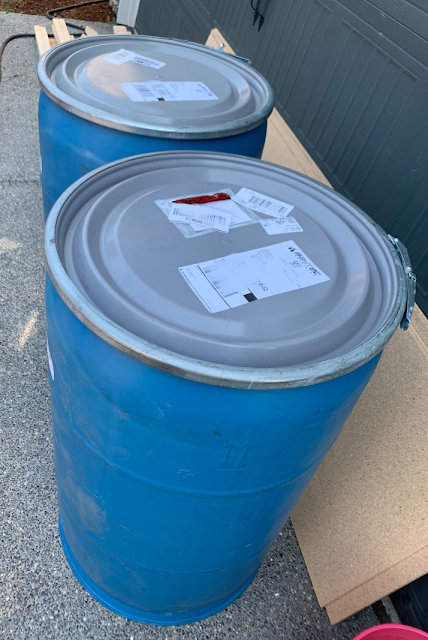Project Start: Protester Body Armor
Watching the state-sponsored violence in Portland over the last few weeks inspired me to start a project.
But first, a minor retrospective.
For a brief while, many years ago, I was a member of the Society for Creative Anachronism (SCA). In brief, the SCA are a (mostly) Middle Ages-era history recreationists - they recreate the "best" part of the period (good food, wine, company, pageantry, and the arts and sciences of the age) and discard the unpleasantries that went along with it (smallpox, plague, short lifespan, death in childbirth, etc). They're mostly good, accepting people - it's less of a hobby and more of a lifestyle, to be honest.
One of the many things that the SCA does is "Heavy Combat". This is where they clad themselves in semi-period accurate (with changes mostly for safety, sometimes for financial reasons) armor and proceed in the gentlepersonly (woman do participate, though in fewer numbers than the men) art of vigorously hitting each other with 1 1/2" rattan sticks that emulate sword combat of a sort. The armor and associated padding buffer the majority of impacts from the sticks, leaving usually just some overall soreness and perhaps a welt from an unlucky hit in an under-protected area. It's appealing for some.
What got me thinking about this, and why I'd bother posting about it now, here, is that those SCA rattan sticks are not wholly dissimilar from the batons used by riot control police.
Why couldn't I use the same techniques to make protester body armor?
I mean, sure, this won't stop any real bullet whatsoever, but anything short of that, it should provide some decent protection from baton strikes, pepperball, rubber-coated-lead munitions, and might even hold up against 40mm stun rounds and beanbag shotgun rounds.
One of the tricks of the SCA to entice new persons to the Heavy Combat arts is to make the initial armor material requirements... not-so-period accurate. They will allow the use of modern, light, affordable, and easy-to-fashion materials like plastic, nylon, neoprene, EVA, and similar to make an initiate's initial armor set. This rule-bending is often known as the "Period from 10 Foot" exception (i.e., if it looks period enough at a distance, don't worry about the details).
This often results in armor that looks the same/similar but is much lighter, cheaper, and more affordable than a custom-fitted mild-steel full plate, mild-steel chainmail hauberk, and padded wool gambeson under-cloak.
One of the more common SCA-approved materials is to take a 55-gallon HDPE drum and carve it up for 8mm plate armor material. Used barrels can go for as little as $20-25 locally on eBay (not including shipping) and a single one can easily kit out an entire head-to-toe armor set, including a shield if desired.
Sadly, there were no active eBay auctions for 55-gallon drums near where I live, and so I opted for the more princely sum of $90 (with free delivery) from BayTec containers. I got two, because in for a pence, in for a pound, I guess. They arrived earlier this week, and so this weekend I processed one of them down to a mostly-flat armor plate.
I did this by drilling a pair of holes near the top along the side - this to give my jigsaw blade enough space to insert, and then I simply cut along the top and bottoms to remove them.
I probably cut too close to the top and/or bottom, as the material immediately curled up even more tightly than the diameter of the barrel.
I uncurled them, just by catching one edge on a concrete stair and muscling them back open (very difficult with one person) and then, using a heat gun to soften the plastic up a bit, placed concrete bricks to help flatten it out.
I'm already working on ideas on what I'll make first, but the weekend's almost over, so I doubt I'll be able to do much more this weekend.




Comments
Post a Comment